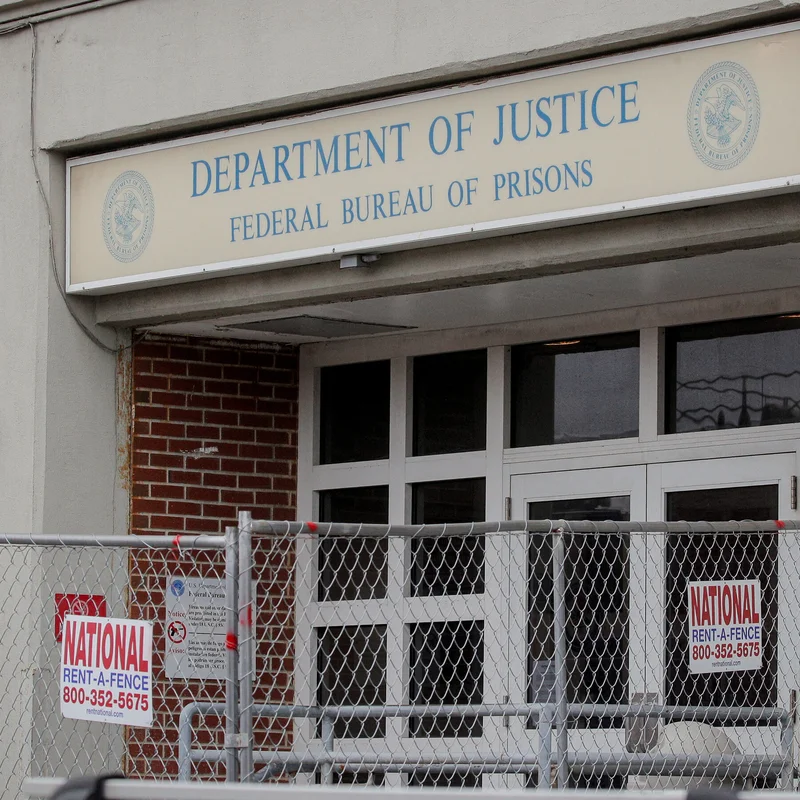In a sweeping move that has drawn sharp condemnation from labor advocates and prison safety experts, the Federal Bureau of Prisons (BOP) has terminated its collective bargaining agreement with the American Federation of Government Employees (AFGE) Council of Prison Locals, effectively stripping union protections from over 30,000 federal correctional workers. The decision, announced on September 26, 2025, is part of the Trump administration’s broader campaign to dismantle federal workforce safeguards and reduce the size of the civil service .
What Changed Overnight?
The BOP invoked a provision in the 2018 Executive Order on Official Time to unilaterally cancel the union contract, eliminating key protections including:
- Grievance procedures for unfair discipline or unsafe assignments
- Negotiated staffing ratios that ensured minimum officer-to-inmate coverage
- Union representation during investigations into workplace incidents
- Official time for union stewards to address worker concerns during shifts
“This isn’t just about contracts—it’s about safety,” said Sergeant Marcus Rivera, a 12-year veteran at USP Atlanta. “Without union backing, officers can be forced into dangerous posts with no recourse.”
⚠️ Critical Risk: The U.S. prison system already faces chronic understaffing—with 25% of correctional officer positions vacant nationwide. Removing union safeguards could accelerate resignations and increase violence.
Why Now? The Trump Administration’s Workforce Agenda
This move aligns with President Trump’s 2025 executive directive to “streamline and depoliticize the federal bureaucracy.” Since January, his administration has:
- Eliminated collective bargaining rights for over 50,000 federal employees across agencies
- Reduced federal workforce by 18% through attrition and hiring freezes
- Reclassified thousands of positions as “confidential” or “policy-determining” to bypass civil service rules
- Launched “Schedule F”-style reforms to make it easier to fire career staff
Impact by the Numbers
| Metric | Pre-2025 | Post-Contract Termination |
|---|---|---|
| Union-covered BOP staff | 30,000+ | 0 (no collective agreement) |
| Average grievance resolution time | 45 days | Unclear—no formal process |
| Staffing vacancy rate | 25% | Projected to exceed 30% by 2026 |
| Workplace injury reports (annual) | 1,200+ | Expected to rise without safety advocacy |
Union and Expert Reactions
- AFGE National President Everett Kelley: “This is a direct attack on the men and women who keep our prisons secure.”
- Brennan Center for Justice: Warns the move “increases risk of abuse, riots, and systemic collapse.”
- Former BOP Director Kathleen Hawk Sawyer: “You cannot run safe prisons without empowered, protected staff.”
- Rep. Jamie Raskin (D-MD): Called it “a reckless experiment in authoritarian management.”
What Happens Next?
AFGE has filed an unfair labor practice charge with the Federal Labor Relations Authority (FLRA) and is preparing for legal action. Meanwhile, prison workers report rising anxiety:
🔄 Flowchart: From Policy to Prison Floor
- White House issues workforce reduction directive
- BOP cancels union contract under executive authority
- Local wardens gain unchecked control over assignments
- Officers lose appeal rights for unsafe conditions
- Morale drops → resignations rise → vacancies grow
- Inmate violence and staff injuries increase
For more on how federal labor policy affects public safety, see our analysis: [INTERNAL_LINK:federal-union-rolls-and-public-safety].
For official data on federal prison staffing and safety, visit the U.S. Bureau of Prisons website.
Sources
- https://www.nytimes.com/2025/09/26/us/politics/federal-prisons-workers-union.html
- https://www.bop.gov
- https://www.afge.org
- https://www.brennancenter.org/our-work/research-reports/federal-workforce-under-siege




